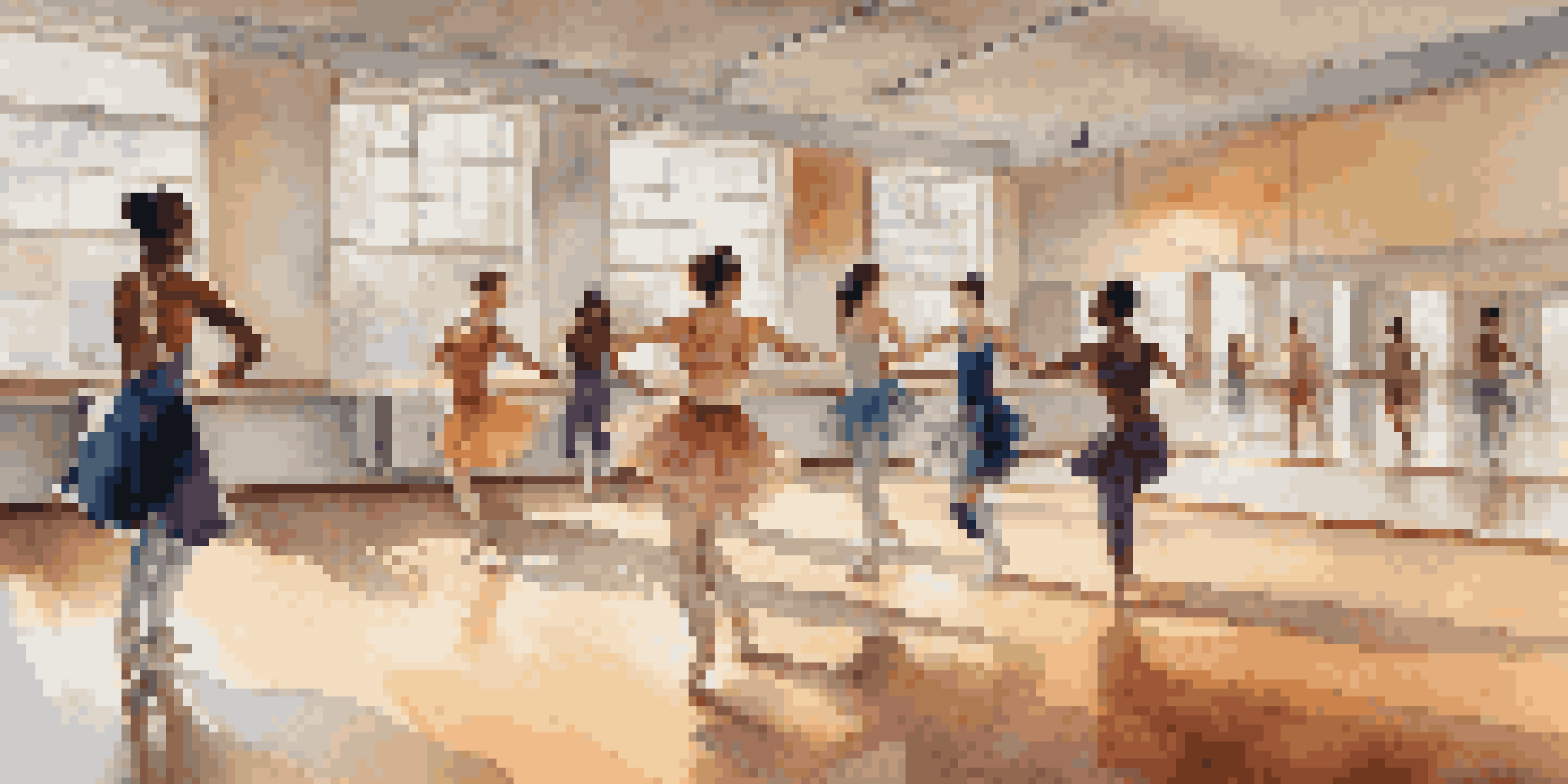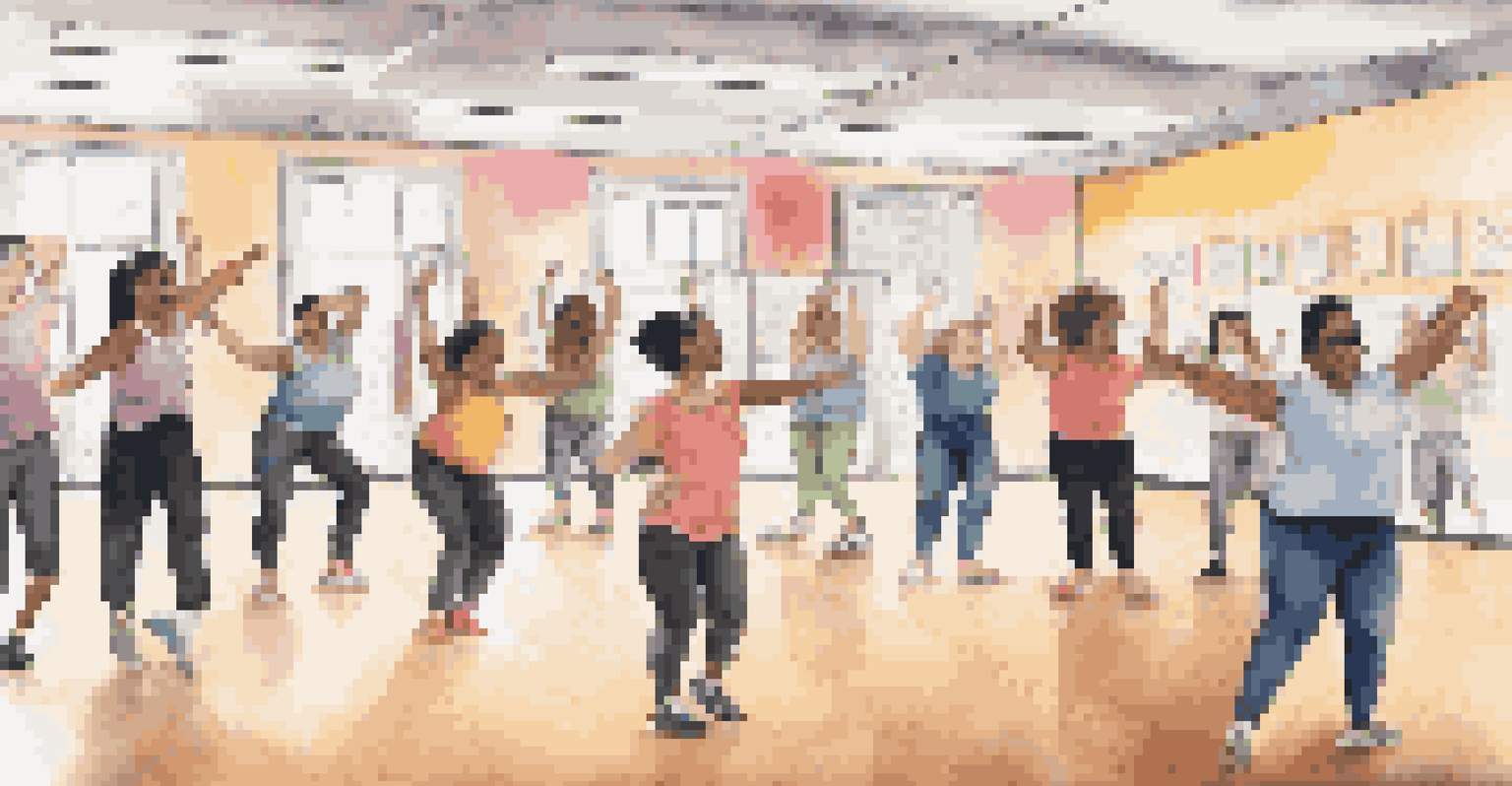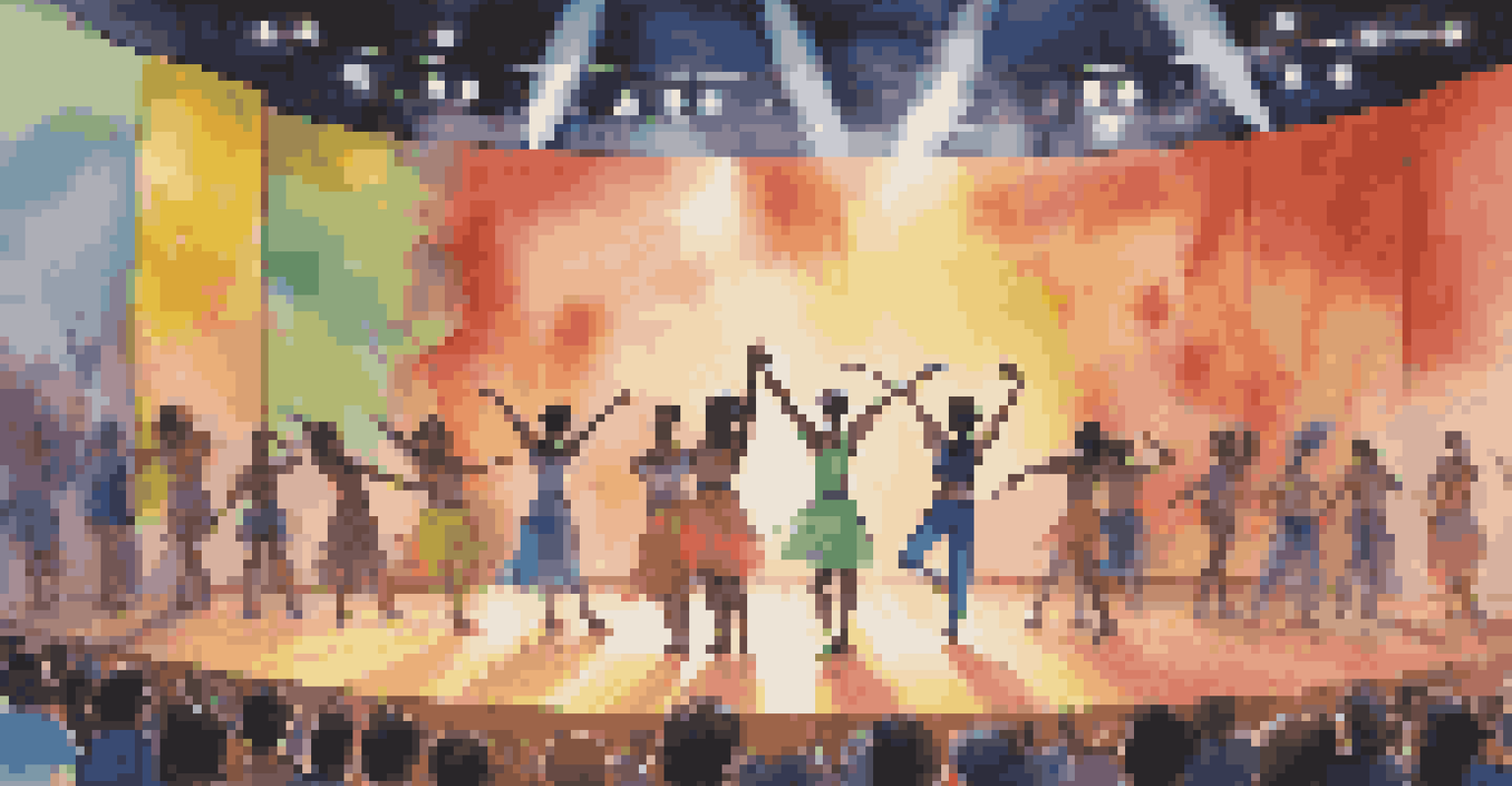The Significance of Gender Identity in Dance Education

Understanding Gender Identity in Dance Education
Gender identity refers to how individuals perceive themselves and what they call themselves, which can differ from their biological sex. In dance education, recognizing diverse gender identities is crucial as it helps create an inclusive environment. This fosters creativity, allowing students to express themselves freely and authentically through movement.
Diversity is the one true thing we all have in common. Celebrate it every day.
When educators embrace various gender identities, they not only validate students' experiences but also enrich the learning atmosphere. This acceptance encourages dancers to explore different styles and forms without fear of judgment. As a result, the dance community can benefit from a wider range of expressions and performances.
Moreover, understanding gender identity in dance education lays the groundwork for respectful interactions among students. By discussing and normalizing gender diversity, we create a culture of empathy and support, which is essential for personal growth in the arts.
The Role of Educators in Promoting Inclusivity
Educators play a pivotal role in shaping attitudes towards gender identity within the dance classroom. By incorporating discussions about gender diversity into their curriculum, they set the tone for acceptance and understanding. This proactive approach not only benefits students' emotional well-being but also enhances their artistic development.

Creating a safe space for all dancers can involve the use of inclusive language and teaching practices that honor each individual's identity. For instance, using gender-neutral terms during class or allowing students to choose their preferred pronouns fosters a sense of belonging. Such measures help students feel more at ease, allowing them to focus on their dance technique and creativity.
Inclusivity Enhances Dance Education
Recognizing diverse gender identities fosters a more creative and supportive dance environment.
Ultimately, when educators prioritize inclusivity, they empower students to explore their identities through movement. This empowerment can lead to groundbreaking choreography and performances that challenge traditional norms, showcasing the beauty of diversity in dance.
Challenges Faced by Diverse Dancers
Despite the progress made in recognizing gender identity, many dancers still face challenges in dance education. These can range from societal expectations to bullying, which can hinder their ability to participate fully. Addressing these challenges is essential for creating a nurturing environment where all students can thrive.
Inclusion is not a matter of political correctness. It is the key to growth.
For instance, dancers who identify outside the traditional binary may struggle to find classes that cater to their needs. This lack of representation can lead to feelings of isolation and exclusion. Dance schools must actively seek to provide diverse programming and support systems to ensure that every student feels welcome.
By acknowledging these challenges, dance educators can work collaboratively with students to create solutions. This might include workshops on gender identity or partnerships with LGBTQ+ organizations to foster understanding and support within the community.
Impact of Gender Identity on Dance Styles
Gender identity can significantly influence the types of dance styles students choose to explore. For example, certain genres may be traditionally associated with specific genders, which can discourage students from pursuing their interests. By breaking down these barriers, educators can encourage exploration across various styles, enriching the students' dance experience.
When students feel free to engage with different genres without the confines of gender norms, they often discover unique ways to express themselves. This openness can lead to innovative choreography that reflects a broader spectrum of human experience. It also promotes a richer dialogue about gender in dance, allowing for deeper connections between performers and audiences.
Representation Inspires Dancers
Diverse role models in dance education empower students to pursue their passions without societal constraints.
Moreover, integrating diverse gender identities into dance education can challenge stereotypes within the art form. As students engage with various styles and techniques, they contribute to a more inclusive narrative in the dance world, ultimately reshaping its future.
The Importance of Representation in Dance Education
Representation matters in dance education; it shapes how students view themselves and their possibilities within the art form. When students see diverse role models in their teachers and performances, it instills a sense of hope and ambition. This representation can empower dancers to pursue their passions, regardless of societal expectations.
Furthermore, including a variety of voices and experiences in dance curricula can deepen students' understanding of the art form. By studying works from a diverse array of choreographers and dancers, students gain insights into how gender identity influences creative expression. This understanding can inspire their own work and encourage them to contribute their unique perspectives.
Incorporating diverse representation not only enriches the educational experience but also fosters a community where all dancers can thrive. A culture of inclusivity encourages collaboration, understanding, and support, which ultimately elevates the entire dance education experience.
Creating Safe Spaces for Expression
Creating safe spaces within dance education is essential for allowing students to express their identities freely. These spaces encourage vulnerability, enabling dancers to share their stories and experiences without fear of judgment. When students feel safe, they are more likely to take risks in their movement, leading to genuine artistic expression.
To cultivate such spaces, educators can establish ground rules that promote respect and openness among students. Incorporating icebreakers and group discussions about gender identity can also foster connection and understanding. These activities help build trust, allowing students to feel more comfortable sharing their thoughts and feelings.
Safe Spaces Foster Artistic Growth
Creating safe spaces allows students to express their identities freely, enhancing individual and community development.
Ultimately, safe spaces in dance education not only enhance individual growth but also strengthen the community as a whole. By fostering an environment where everyone feels valued, we lay the foundation for a more inclusive and vibrant dance culture.
Future Directions in Dance Education and Gender Identity
As society continues to evolve, so too must dance education in terms of gender identity. Future directions might include more comprehensive training for educators on inclusivity and diversity. This could ensure that all students receive the support they need, regardless of their gender identity.
Furthermore, integrating technology can also play a role in advancing gender inclusivity in dance education. Online platforms can provide resources, workshops, and community forums where dancers can connect and share their experiences. This connectivity can help foster a greater understanding of gender identity within the dance community.

In conclusion, the future of dance education lies in its ability to adapt and embrace diversity. By prioritizing gender identity, we can create a more inclusive environment that not only nurtures talent but also celebrates the unique stories of every dancer.